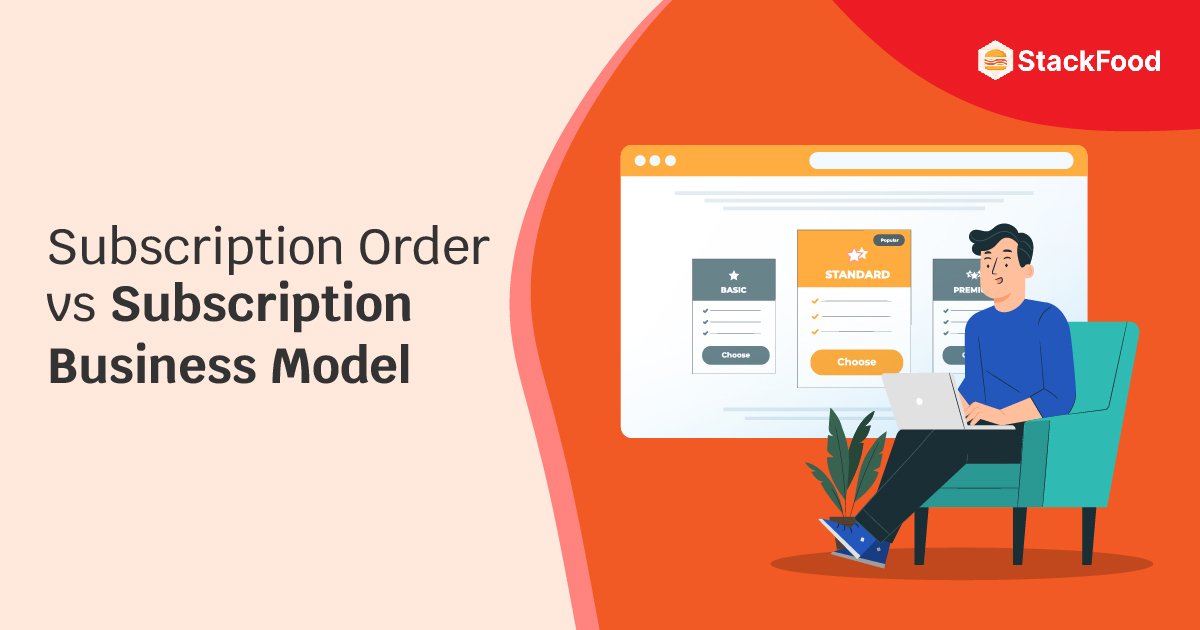StackFood is one of the most trending multi restaurant online food delivery solutions on CodeCanyon. The StackFood solution offers a compelling set of features that are financially beneficial to the admin and restaurant owners. For the end users, StackFood has features that are hard to find in conventional food ordering systems.
You may know that StackFood has the most powerful order confirmation model that ensures zero order misses. In today’s blog, I will give you a detailed explanation of StackFood’s diversified business models (with examples). So you’ll know why StackFood is so special 🙂
So keep reading!
Let’s take a closer look at how StackFood is redefining the food delivery industry with its diverse business models.
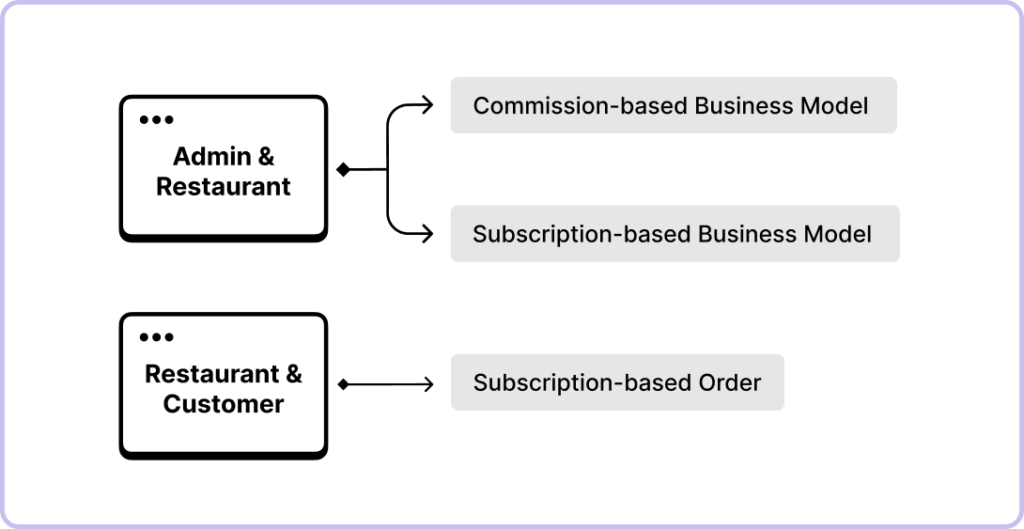
Illustration: StackFood Business Models
Commission-Based Business Model
The commission-based business model is when restaurants pay the admin on every food they sell.
This means whenever a restaurant receives an order, delivers food, and gets payment, the admin’s commission is automatically deducted from the restaurant wallet and added to the admin’s earnings. To enable this business model, the admin needs to set up their business rule from the business settings section of the admin panel.
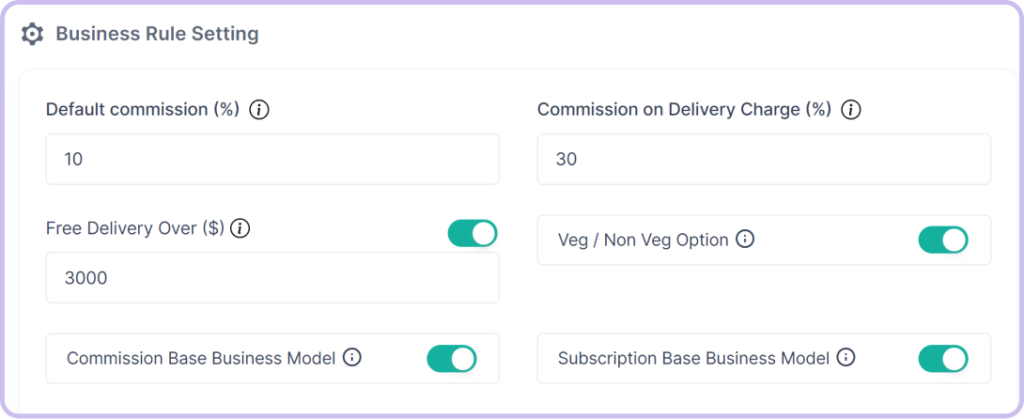
Admin can also change the commission amount according to different restaurants and charge different rates. For this, they need to go to the restaurant’s list and select a specific restaurant. After that, the admin needs to click on the ‘Edit’ icon and then go to the restaurant setting section.
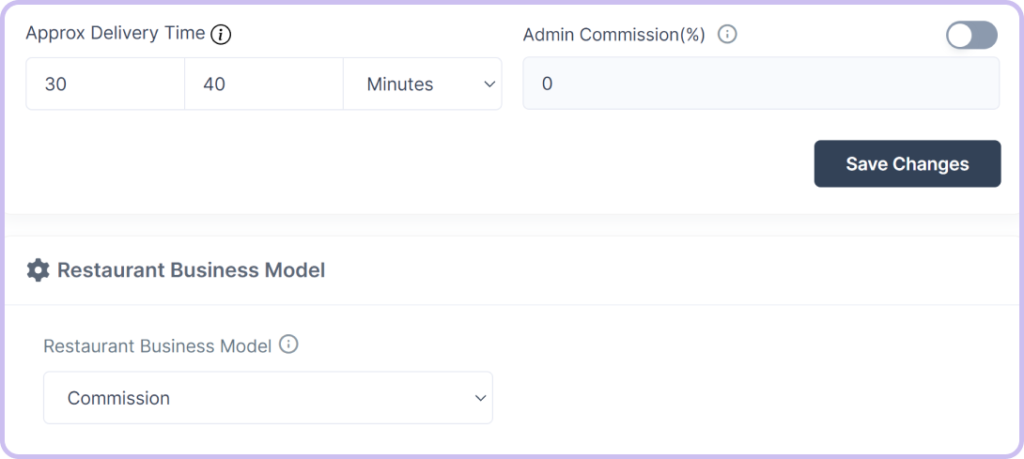
Here, they can change the restaurant’s business model and add different commission rates. Please note that if the admin doesn’t add any commission rate from here, the default commission rate will apply to that specific restaurant.
The commission-based business model serves as a win-win for both parties. Why? Because restaurants gain full access to the multi restaurant food ordering platform without limitation. That means they can use all the features and facilities without restrictions. They also get a seamless platform for order management, while the admin enjoys a steady revenue stream. It’s a partnership that fuels success on all fronts.
Subscription-based Business Model for Restaurants
In the subscription-based business model, the admin receives a regular subscription payment from the restaurants in a fixed amount. The payment schedule can be weekly, bi-weekly, monthly, yearly, etc. For this, the admin needs to create various subscription packages and allow app and panel permissions according to the package prices for the restaurants.
After successfully creating subscription packages, the admin can manually add restaurants to the packages by changing their business model (that aren’t using the subscription packages). For this, admin needs to do the following-
- Log in to the StackFood Admin Panel.
- Go to the restaurant list & select a specific restaurant.
- Click on the ‘Edit’ icon & go to the restaurant setting.
- Click on the settings tab & change the restaurant business model from ‘Commission’ to ‘Subscription.’
- After changing the business model, go to the ‘Subscription’ tab.
- Click ‘Add Subscription Package,’ then choose a plan for the restaurant.
After choosing the subscription plan, the admin needs to select a payment method- manual payment or payment via the restaurant’s wallet and change their subscription.
If the ‘Manual Payment’ method is selected, the admin will collect the subscription payment offline/manually. But, if ‘Pay from Restaurant Wallet’ is selected, then the subscription fee will be automatically deducted from the restaurant’s wallet on StackFood and will be added to the admin’s earnings.
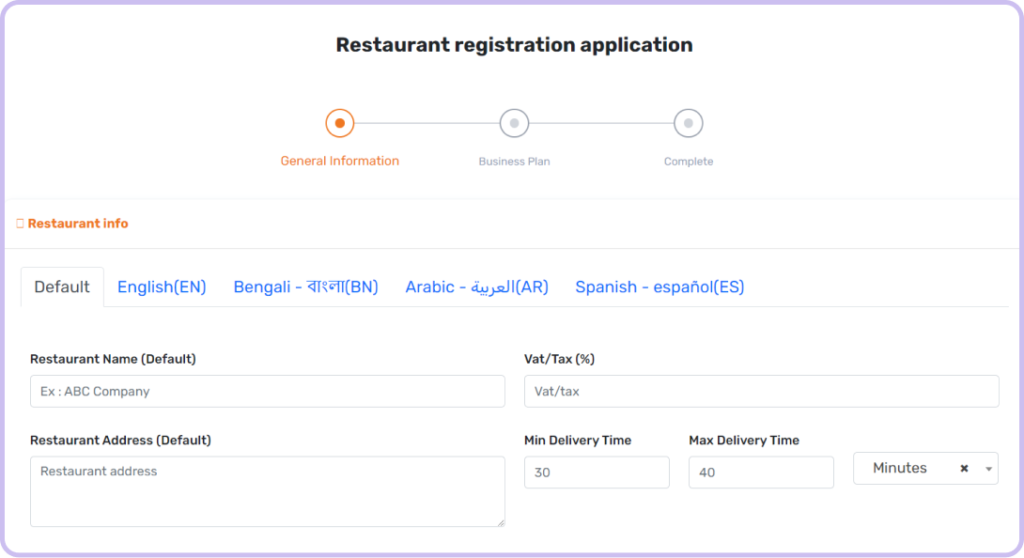
A user can do self-registration as a restaurant owner and choose their preferred business model that is available on the system (without admin’s help). For this, a user needs to log in to the StackFood System. A user can join as a restaurant from the following-
- Admin Landing Page (Business Website)
- Flutter User App
- Flutter Web App
- React Web App
- Restaurant App
After providing accurate information, the restaurant owner will be taken to the next page, where they need to choose a business model.
- Choose the ‘Subscription-based’ business model.
- Select a subscription plan & proceed to payment.
- Choose a payment method & make payment.
- Set up the restaurant and start adding food items.
No two restaurants are the same, and StackFood understands this. That’s why admin has the feature to create attractive commission-wise & subscription-based packages that fit all restaurants’ unique needs. This helps restaurants to choose a suitable plan while ensuring a fixed profit stream for the admin parallelly.
The Subscription Order Model for customers
StackFood introduces a unique subscription model for customers that adds an extra layer of convenience to the food ordering process. These orders are pre-scheduled meal deliveries that occur on a regular basis. Users can set up their preferences, such as the frequency of deliveries, specific meal choices, and delivery times.
This means your customers can have their favorite burrito from that nearby Mexican restaurant delivered to their home every Tuesday at 6 p.m. without placing a new order each time.
Here’s how it works: if the admin enables this feature from the backend, restaurants can choose to enable or disable it as well. When both sides are opt-in, customers gain the power to subscribe to their favorite restaurant on a regular basis.

Test Case
‘Hungry Puppets’ is a restaurant registered in the StackFood admin panel. The admin has enabled the ‘Order Subscription’ feature from the restaurant’s settings. The owner of ‘Hungry Puppets’ has also enabled this feature from the restaurant panel.

After that, the restaurant owner must define their operating schedule, which means they can define the restaurant’s opening and closing hours on a day-to-day basis. After saving the changes, the feature is now perfectly enabled.
Now let’s see how it works on the user web app:
From the user web app, customers can choose the order type: regular or subscription order. After choosing the subscription order, the customer can select the subscription type (daily, weekly, or monthly), subscription date, and schedule a time when they want to receive the food.
This is an incredible feature for customers who want to ensure on-time meal delivery on a daily basis.
Summary
With StackFood’s innovative business models, the online food delivery business isn’t just about eating; it’s about choices and convenience. Whether you’re an admin or a restaurant owner who’s looking for a top-notch food delivery platform to expand your digital reach and want to provide your customers with the ultimate online food ordering experience, StackFood’s business models are designed just to meet your needs.
This blog comprehensively looks at StackFood’s three unique business models, highlighting the advantages and opportunities they offer to restaurants, admins, and customers.
Stay tuned for more insights, updates, and a deeper dive into the world of StackFood!
Ciao!
Say hello to Shamsi! A words warrior behind the tech scenes. She can slice and dice complex tech talk into everyday narratives. Shamsi aims to make tech simple and friendly so everyone feels welcome in the digital world. When not weaving words, you might find her talking to plants and doodling here and there!







